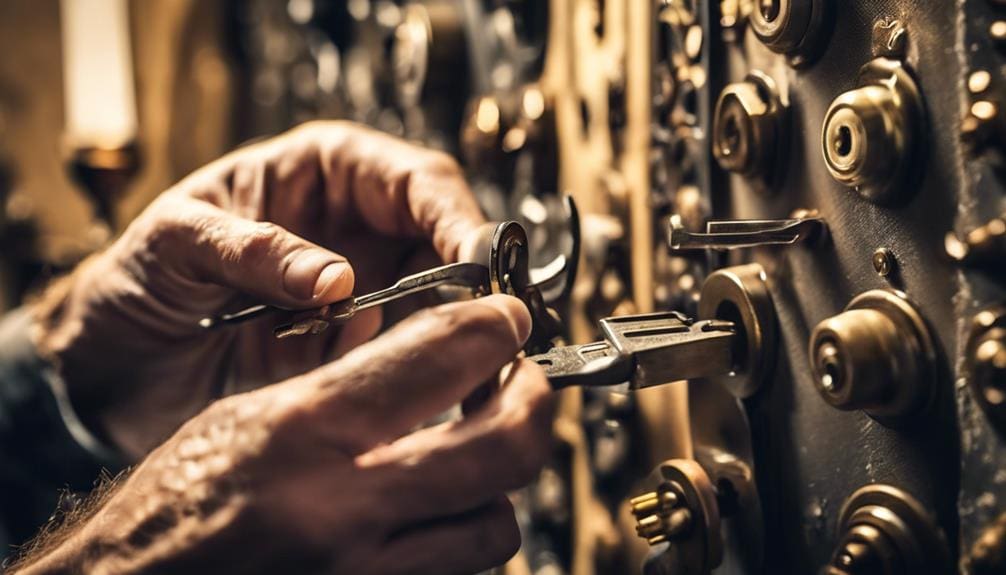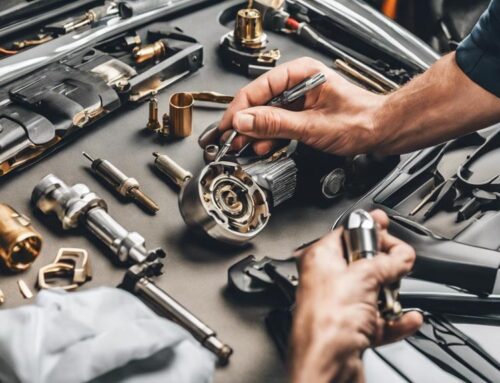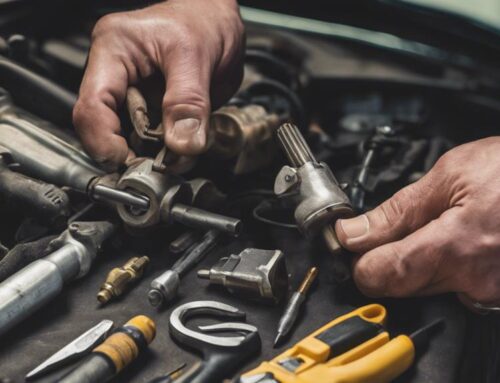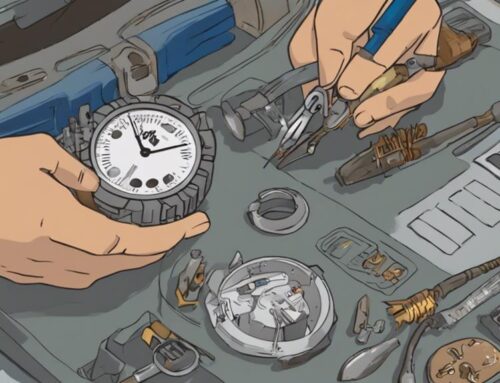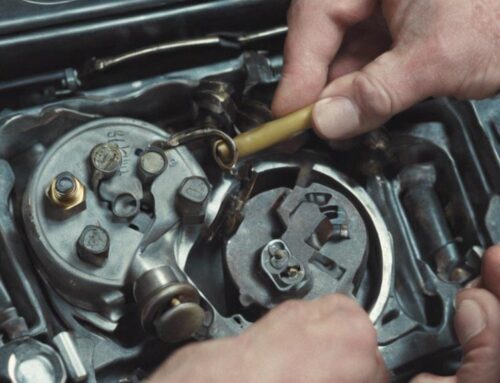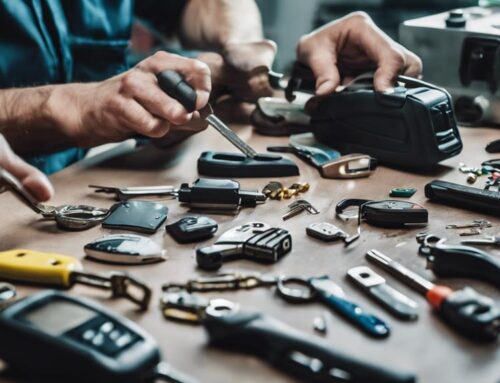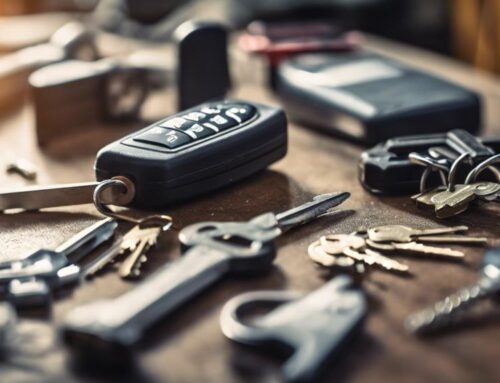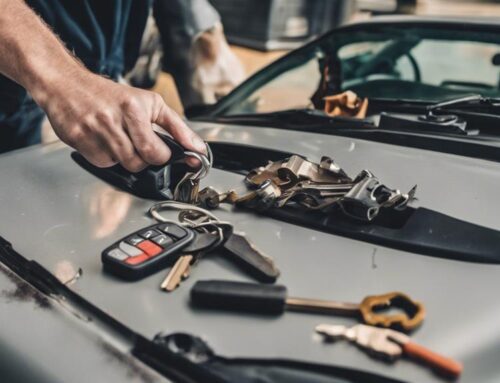Yes, a locksmith can repair damaged locks, addressing issues from wear and tear to key breakage. They’ll realign misaligned strike plates, extract broken keys, and replace worn-out internal components, ensuring the lock functions correctly. For commercial locks, locksmiths handle mortise locks, panic bars, and keyless entry systems with specialized skills. In automotive scenarios, they diagnose and fix both mechanical and electronic lock problems using precision tools. Additionally, in emergencies, locksmiths provide rapid and effective repair or replacement, enhancing security with minimal disruption. Discover further nuances in lock repair solutions and the factors influencing your decision between repair and replacement.
Key Takeaways
- Locksmiths can repair various lock damages, including wear and tear, misalignment, and key breakage.
- Professional locksmiths use specialized tools to diagnose and fix both mechanical and electronic lock issues.
- Repair techniques involve fixing internal components, adjusting misaligned strike plates, and extracting broken keys.
- Locksmiths provide cost-effective repair solutions but may recommend replacement for severely damaged or outdated locks.
- Choosing a licensed, bonded, and experienced locksmith ensures reliable lock repair and enhanced security.
Common Types of Lock Damage
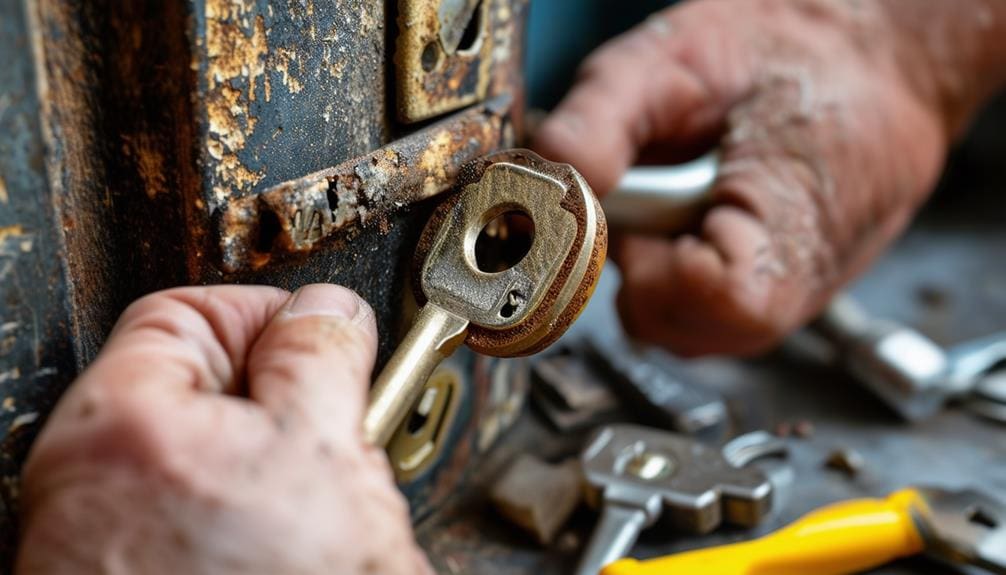
Locks can suffer from various types of damage, including wear and tear, misalignment, and key breakage. When a lock endures wear and tear, its internal components—like the pins and springs—can degrade, leading to reduced functionality. You might notice that the key doesn’t turn smoothly or requires extra force. Misalignment, often due to improper installation or environmental changes, can cause the lock and the strike plate to be out of sync, making it difficult to lock or open the door.
Key breakage is another common issue. This occurs when a key snaps inside the lock, leaving part of it stuck in the keyway. Extracting a broken key requires precision; if not done correctly, it can further damage the lock’s internal mechanisms. Regular maintenance can mitigate these issues, ensuring longevity and reliability.
Understanding these types of damage is essential for anyone aiming to maintain robust security systems. Each issue requires a unique approach for effective resolution. By staying aware of these common lock problems, you can take proactive steps to address them, ensuring your locks remain in optimal condition and your security uncompromised.
Residential Lock Repair Services
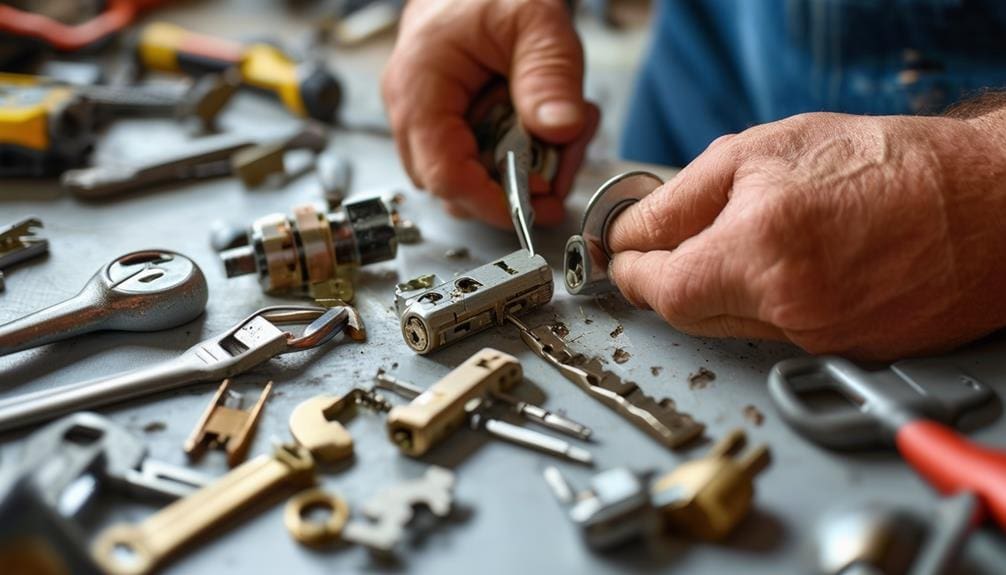
When addressing residential lock repair services, you’ll encounter common issues like jammed locks, broken keys, or worn-out mechanisms. It’s essential to assess whether to repair or replace the lock based on the extent of damage and security needs. Accurate cost and time estimates will help you make an informed decision, ensuring efficiency and safety in your home.
Common Lock Issues
Among the myriad of issues you might encounter with residential locks, some of the most common problems include misaligned strike plates, worn-out keys, and damaged lock mechanisms. A misaligned strike plate can prevent your door from latching correctly, compromising security. To address this, you’ll need to adjust the strike plate by loosening its screws and aligning it with the latch bolt.
Worn-out keys can cause your lock to jam or not turn smoothly. This often results from repetitive use, causing the key’s metal to degrade. A skilled locksmith can rekey the lock, providing you with a new set of keys without replacing the entire mechanism.
Damaged lock mechanisms are another prevalent issue. Internal components can wear out or break, leading to a malfunctioning lock. This often requires disassembling the lock, inspecting each part, and replacing any faulty components.
Understanding these common problems empowers you to recognize when professional locksmith services are necessary. Addressing these issues promptly ensures your home remains secure and your locks function at their best. Remember, a well-maintained lock is your first line of defense against unauthorized access.
Repair Vs. Replace
Deciding whether to repair or replace a residential lock requires a thorough assessment of the lock’s condition, the extent of the damage, and your security needs. When evaluating your options, you’ll need to take into account several key factors. A lock that’s only slightly misaligned or has minor wear and tear might be a candidate for repair. However, if the lock is severely damaged, corroded, or outdated, replacement could be the more reliable and secure option.
| Criteria | Repair | Replace |
|---|---|---|
| Condition | Minor wear, slight misalignment | Severe damage, corrosion, outdated |
| Security Needs | Adequate for current security level | Upgrade for enhanced security |
| Cost | Generally lower than replacement | Higher initial cost, long-term value |
| Time | Usually quicker to repair | May take longer to install |
A detailed evaluation by a professional locksmith will provide you with the most accurate recommendation. If your current lock still meets your security requirements and is in relatively good condition, repairing it can be a cost-effective and swift solution. Conversely, if there’s significant damage or the lock no longer meets modern security standards, replacing it guarantees long-term protection and functionality. Always weigh both the immediate and future implications of your decision to make sure you’re making the best choice for your home’s security.
Cost and Time Estimates
Accurately estimating the costs and time required for residential lock repair services involves considering factors like the complexity of the lock issue, the locksmith’s hourly rate, and any additional materials needed for the repair. If you’re dealing with a simple lock issue, such as a misaligned latch, the repair might take just 30 minutes and cost around $50 to $100. However, more complex problems, like a broken lock mechanism, can extend the repair time to a couple of hours and push costs to between $150 and $250.
Locksmiths typically charge an hourly rate ranging from $50 to $100, depending on their expertise and your geographical location. You should also factor in the cost of any replacement parts; high-security locks or electronic components will naturally incur higher expenses. It’s important to request a detailed estimate before work begins to avoid unexpected costs.
Time is a significant aspect as well. Emergency services or after-hours repairs might incur additional fees, and specialized locks often require more time and expertise. By understanding these variables, you can make informed decisions and guarantee your lock repair is both efficient and cost-effective.
Commercial Lock Repair Solutions
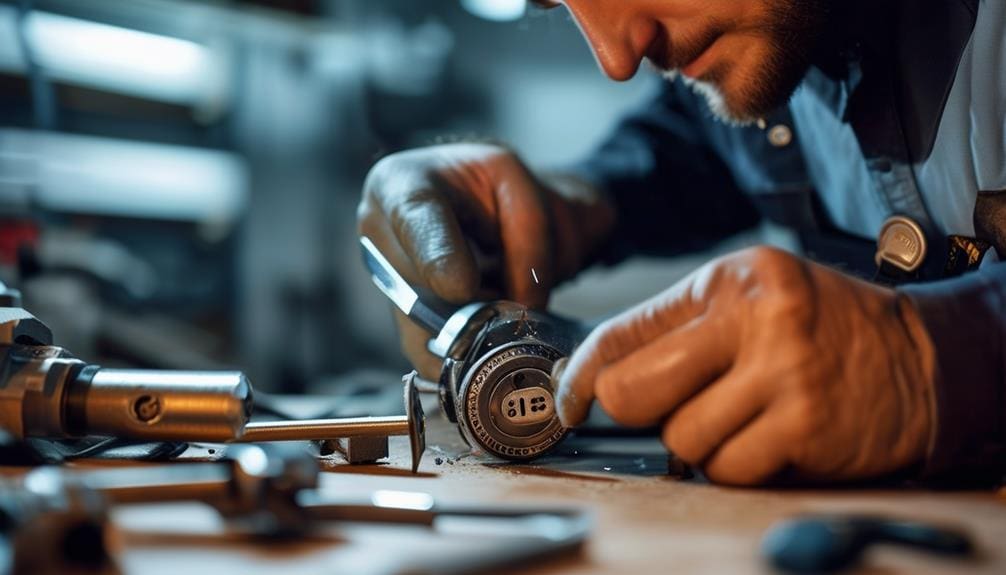
When addressing commercial lock repair solutions, you’ll need to understand the various types of commercial locks and the specific techniques required for their repair. It’s important to employ advanced methods tailored to each lock type to guarantee security and functionality. Selecting professional locksmith services guarantees expertise and reliability, minimizing downtime and enhancing safety.
Types of Commercial Locks
Understanding the various types of commercial locks is essential for implementing effective lock repair solutions and maintaining security standards. You need to know the specific types of locks used in commercial settings to diagnose issues accurately and apply the right repair techniques. Here are three common types of commercial locks you should be familiar with:
- Mortise Locks: These are robust and durable, making them ideal for high-traffic areas. They consist of a complex system of levers and cylinders, often integrated with door hardware. Repairing mortise locks requires detailed knowledge of their internal mechanisms.
- Panic Bars (Crash Bars): Widely used in emergency exits, panic bars allow for quick egress in case of emergencies. They are designed to be fail-safe and must comply with safety regulations. Repairing these involves ensuring the mechanism functions seamlessly under pressure.
- Keyless Entry Systems: These advanced locks use electronic keypads, card readers, or biometric scanners. They offer enhanced security and convenience but require specialized knowledge for troubleshooting and repairs, such as dealing with software issues or electronic malfunctions.
Common Repair Techniques
Knowing the types of commercial locks is the foundation, but mastering common repair techniques for these locks will guarantee you can handle any issue that arises. One of the most important techniques is rekeying, where you replace the internal pins to match a new key. This guarantees security without replacing the entire lock assembly.
Next, addressing lock cylinder issues is essential. If a cylinder is misaligned or jammed, you can remove it, lubricate the internal components, and reposition it correctly. This restores smooth operation and prevents future malfunctions.
For electronic commercial locks, software recalibration is crucial. Often, malfunctions are due to firmware glitches or software conflicts. Updating the software or resetting the system can resolve these issues quickly.
Another necessary technique is fixing or replacing broken key extractors. If a key breaks inside the lock, using specialized tools like spiral extractors or hook-type extractors can remove the fragment without damaging the lock.
Lastly, handle mechanism adjustments are important for door alignment issues. Ensuring the door and lock mechanism are perfectly aligned can prevent unnecessary strain and prolong the lock’s lifespan. Mastering these techniques will help you maintain control over your commercial security solutions.
Choosing Professional Services
Choosing the appropriate expert locksmith services for commercial lock repair guarantees that your business’s security remains uncompromised and operational efficiency is maintained. When selecting a locksmith, prioritize those who have extensive experience in commercial settings and possess a thorough understanding of advanced locking systems. This ensures they can handle complex repairs and installations with precision.
Here’s a detailed approach to selecting the right professional services:
- Verify Credentials: Confirm the locksmith is licensed, bonded, and insured. These credentials demonstrate their legitimacy and protect you from potential liabilities.
- Evaluate Expertise: Look for locksmiths who specialize in commercial lock systems. They should have proficiency in high-security locks, electronic access control systems, and master key systems to meet your business’s specific needs.
- Check References and Reviews: Investigate their reputation by reviewing customer testimonials and seeking recommendations from other businesses. Positive feedback and a solid track record indicate reliability and quality service.
Car Lock Damage Fixes
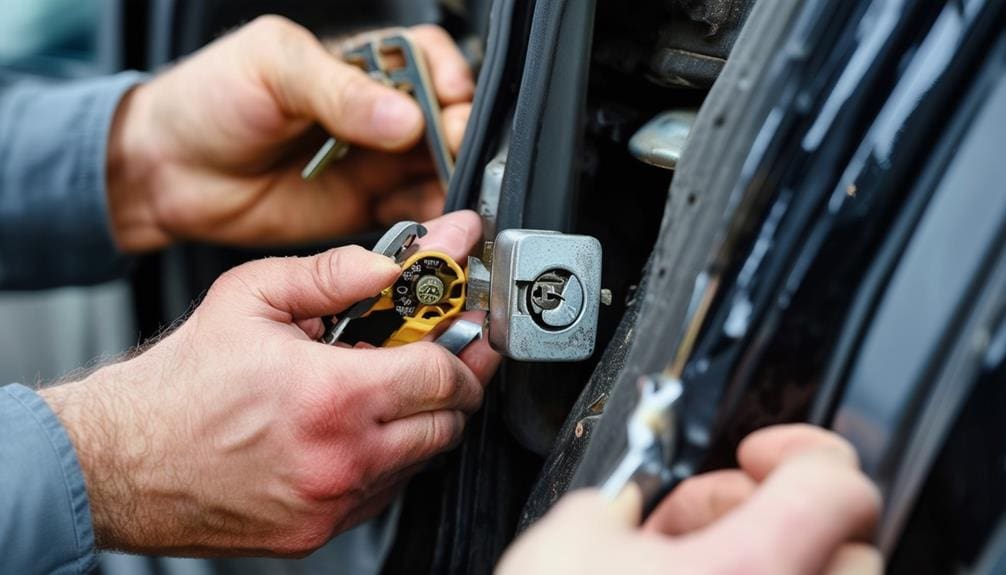
Addressing car lock damage requires a meticulous approach to ensure the integrity of your vehicle’s security system. First, identify whether the issue lies with the mechanical components or the electronic locking mechanism. A professional locksmith will conduct a detailed diagnostic to pinpoint the exact problem. If the damage is mechanical, such as a broken key inside the lock or worn tumblers, specialized tools like extractors and picks are used to remove debris and realign the components.
For electronic locks, the process involves more sophisticated techniques. Locksmiths will often use advanced diagnostic tools to interface with your car’s onboard computer system, ensuring no hidden faults compromise the security. They may reprogram or replace the damaged electronic modules, ensuring seamless integration with your vehicle’s immobilizer system.
In cases where the lock housing is damaged, a complete replacement may be necessary. This involves removing the door panel, extracting the faulty lock, and installing a new, compatible unit. Precision is vital here, as improper installation can lead to misalignment and future vulnerabilities. Ensuring you employ a skilled locksmith guarantees your vehicle’s security remains uncompromised and fully operational.
Emergency Lock Repair
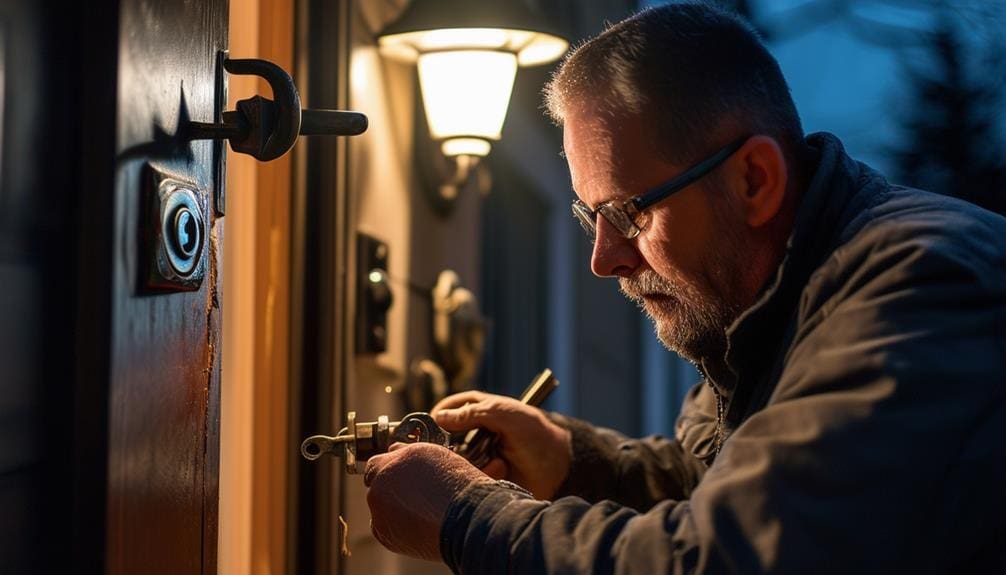
When faced with a sudden lock malfunction, immediate action is imperative to restore security and access. In such emergencies, a locksmith can provide rapid and effective solutions to address the issue promptly. Their expertise enables them to diagnose and fix various lock problems efficiently, ensuring minimal disruption to your schedule.
Emergency lock repair involves the following key steps:
- Assessment: The locksmith will perform a thorough examination of the lock to identify the nature of the malfunction. This can include checking for internal damage, alignment issues, or signs of tampering.
- Immediate Repair or Replacement: Depending on the assessment, the locksmith may either repair the damaged components or replace the lock entirely. They carry a range of tools and replacement parts to handle various lock types, ensuring swift resolution.
- Security Enhancement: Post-repair, the locksmith will test the lock to confirm its functionality and robustness. They may also suggest additional security measures if the lock was compromised due to forced entry or wear.
Why Choose Low Rate Locksmith
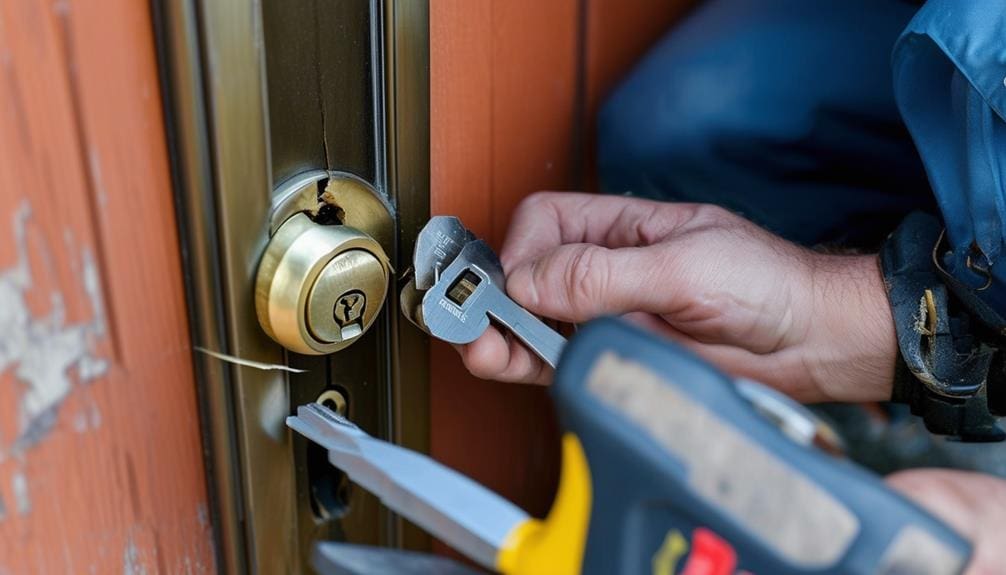
With Low Rate Locksmith, you gain access to highly skilled professionals who deliver excellent locksmith services at competitive prices. Our locksmiths are trained rigorously, making sure they possess the technical acumen necessary to handle a wide range of lock repair scenarios. Whether you’re dealing with a traditional lock or a modern electronic system, our experts can diagnose and resolve issues efficiently.
Choosing Low Rate Locksmith means opting for reliability and quick response times. We grasp the critical nature of security, and our team is equipped with cutting-edge tools to provide accurate repairs. Our technicians adhere to industry standards, making sure that every repair not only meets but exceeds safety requirements.
We prioritize customer satisfaction through transparent pricing and extensive service offerings. You’ll receive a detailed assessment and a clear, upfront quote before any work begins, eliminating any unpleasant surprises. Additionally, our 24/7 availability ensures that you’re never left vulnerable, no matter when a lock issue arises.
Frequently Asked Questions
How Can I Prevent Future Lock Damage?
To prevent future lock damage, lubricate locks regularly, avoid excessive force, keep keys clean, and maintain proper alignment. Implementing these practices maintains lock integrity and enhances security, providing you with control and peace of mind.
What Tools Do Locksmiths Use for Lock Repairs?
Locksmiths use precision tools like lock picks, tension wrenches, and plug spinners. They’ll also employ key extractors, electric pick guns, and specialized rekeying kits. These tools guarantee efficient, secure lock repairs, maintaining your property’s integrity.
Are Electronic Locks More Difficult to Repair?
Yes, electronic locks are often more difficult to repair. You’ll need specialized tools and knowledge to handle their intricate circuitry and software. Their complexity requires a higher skill level compared to traditional mechanical locks.
How Long Does a Typical Lock Repair Take?
A typical lock repair takes around 30 minutes to an hour. Factors like the lock type and damage extent influence this. With precision tools and expert skills, you’ll regain security swiftly and efficiently.
Can a Locksmith Repair Antique Locks?
Yes, a skilled locksmith can repair antique locks. They possess the expertise to handle intricate mechanisms, ensuring preservation and functionality. You’ll benefit from their specialized knowledge, restoring your lock’s original integrity and enhancing its historical value.
Conclusion
To sum up, locksmiths can indeed fix damaged locks across various settings. Did you know that 70% of lock issues can be resolved without a complete replacement? This statistic highlights the effectiveness and affordability of professional lock repair services. Whether it’s a residential, commercial, or automotive lock, skilled locksmiths offer customized solutions to restore security promptly. When emergencies strike, selecting a trustworthy service like Low Rate Locksmith guarantees your safety and peace of mind.

